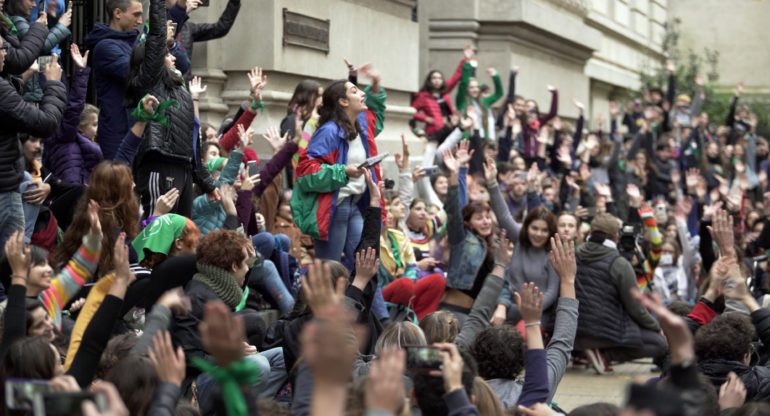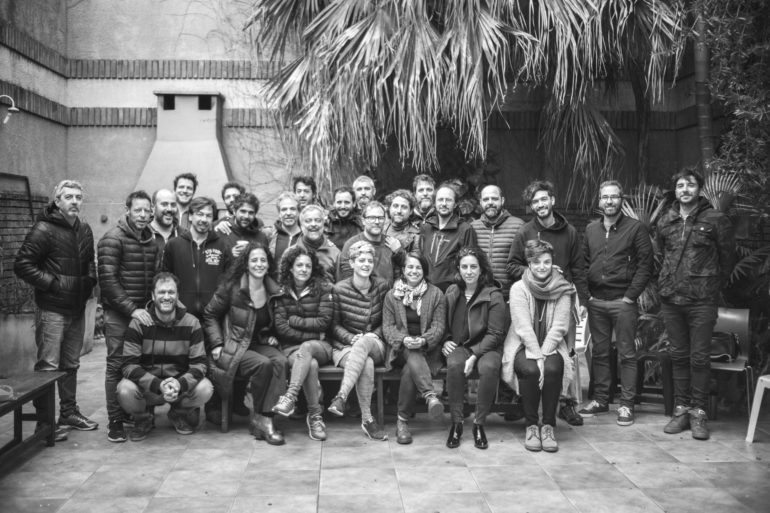Ventana Sur: PCI Showcases the Diversity of Argentine Cinema
By John Hopewell
LOS ANGELES (Variety.com) – BUENOS AIRES — Mario Vargas Llosa, the great Peruvian novelist, once wrote that reality in Latin America is too compelling to ever be ignored in its fiction. Yet, as WWII raged, Jorge Luis Borges, perhaps the greatest of Argentine writers, pointedly published “Ficciones,” fantasy tales, often philosophical speculation given narrative form.
If this year’s PCI Film Directors Assn, showcase at Ventana Sur is anything to go by, some young Argentine filmmakers are having it both ways, creating films which straddle the fiction-reality divide, or enroll fabrication and myth to large effect. Their films, sneak peaked in brief extracts or teaser trailers at the PCI’s annual Work in Progress showcase during , and underscored the diversity of Argentine filmmaking, a cause championed by PCI and its around 100 directors, and an indication of the depth of talent of Argentine filmmaking.
“7h 35” is a case in point. The feature debut of Javier Van de Couter, co-scribe on “Aire libre” and “Alanis,” both from Anahi Berneri, who in turn co-wrote “7h 35” with Van de Couter, it was one of seven features featured at the PCI event. It turns on two real survivors, Rodrigo Torres and Pablo Saldías, of the 2004 Carmen de Patagones school massacre. 15 years after the shooting, they embark on a journey to find Juniors, the former classmate who shot them. The story is fiction, but the survivors real, and non-actors.
Made for upscale French broadcaster Arte, Mariano Nante’s “Beethoven: Last Sonatas” has famed French pianist Alexandre Tharaud playing Beethoven’s final three sonatas. This might seem a documentary, but Tharaud is also interpreting, for example, walking through a mildewed abandoned house, which last sonatas. Decor’s underscoring of theme is a trope of fiction. Arte screened a 45-minute version in November; Tharaud will travel to Buenos Aires to perform after a longer 75-minute screening at its Teatro Coliseo, Nante said in Buenos Aires.
Argentina has always looked to Europe as a reference. One of its major achievements has been to make movies that combine artistic or social reference with large popular appeal at home and sizable box office even in overseas territories, now rare for foreign-language films: Think “Wild Tales,” “The Clan” and “El Angel,” and potentially “4 x4” next year.
Another has been to produce movies which challenge the spectator to join the dots, proclaim their own existence as movies, presuppose a broad cinema literacy on the part of the spectator, proclaim their subjectivity or are left-of-field even by film festival standards. Lisandro Alonso’s “Jauja,” with Viggo Mortensen, springs immediately to mind.
Mattías Lichtmann’s “The Red Star: A Purim Story” is a mockumentary, a movie documenting a fiction -an Argentine woman Nazi-hunter never in historical records – which suggests an essential fact: Many women are written out of history. Screened at the PCI showcase, the trailer for the film is narrated by the director, or an actor playing the director, proclaims a personal connection to the documentary, sparked by his finding material in a trunk belonging to his grandfather.
Also presented in a teaser trailer at last week’s PCI WIPs, “Toads” portrays real people – a stripper, a trans guy, – all clients of a fictional doctor, played by an actor, trying to change their DNA. The doctor emerges as a kind of Frankenstein, but the film questions whether that pigeon-holing is unjust.
In “Badu Hogar,” a Salta-set screwball comedy, the titular Badu is a loser, a 35-year-old who still lives with his parents, thinks he has a brain tumor. But he still scores with a vivacious, intelligent girl by inviting her to Badu Hogar, a family home appliance store preserved from the late ‘80s which piques her sense of fantasy. The shop emerges as a kind of mythic realm, facilitating a unlikely love, based on lies.
The other two movie productions sneak peeked at the WIPs, Marco Berger’s “The Hunter” and “National College,” seem straight fiction and documentary respectively.
“The Hunter” turns on Ezequiel, a fifteen-year-old gay teenager who, in his sexual awakening, starts a relationship with a boy of twenty-one. Soon he receives a video of him having sex with the other boy, and is asked to capture a smaller boy for child pornography. But will a victim become a victimizer? The questions adds a new edge to a Berger film.
“National College” chronicles a year in the life of the elite academic institution. There may be little self referentiality in the film, but it once more flies the flag of Argentina’s modernity, as the National College’s famously iconoclastic students rapidly take up the banner of gender activism, protesting sexual abuse at one of the country’s most revered institutions.
At its best, Argentine independent can be rich in complexities. Seen at Ventana Sur in a two-minute excerpt, “7h 35” shows Rodrigo Torres and Pablo Saldías indulging in what might seem good old horseplay in a motel room. The scene prompts multiple sensations: A fascination with two real survivors of a school massacre, one of the ultimate contemporary nightmares; gnawing doubts as to whether they were in any way responsible for what happened; uncertainty even about what kind of doc-fiction the spectator is seeing, and what Rodrigo and Pablo will do if they do find Juniors.
A large question, not only for Argentine cinema but in many parts of the world, is, as governments focus incentives on films which have more obvious broader audience potential, how much of this rich arthouse tradition will survive.



